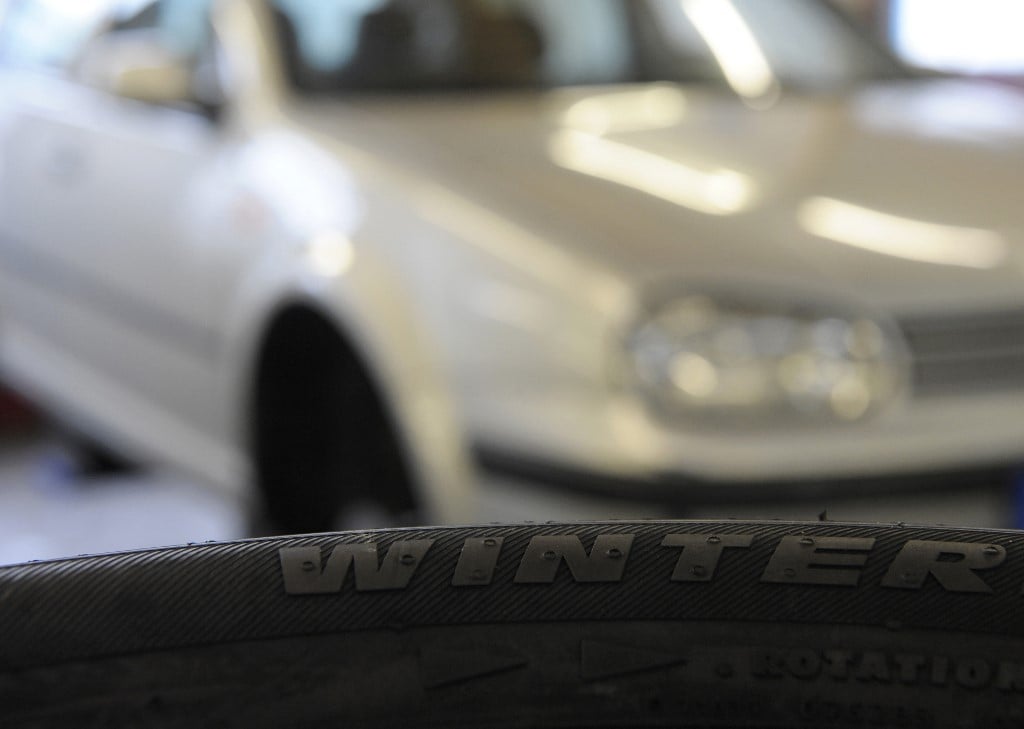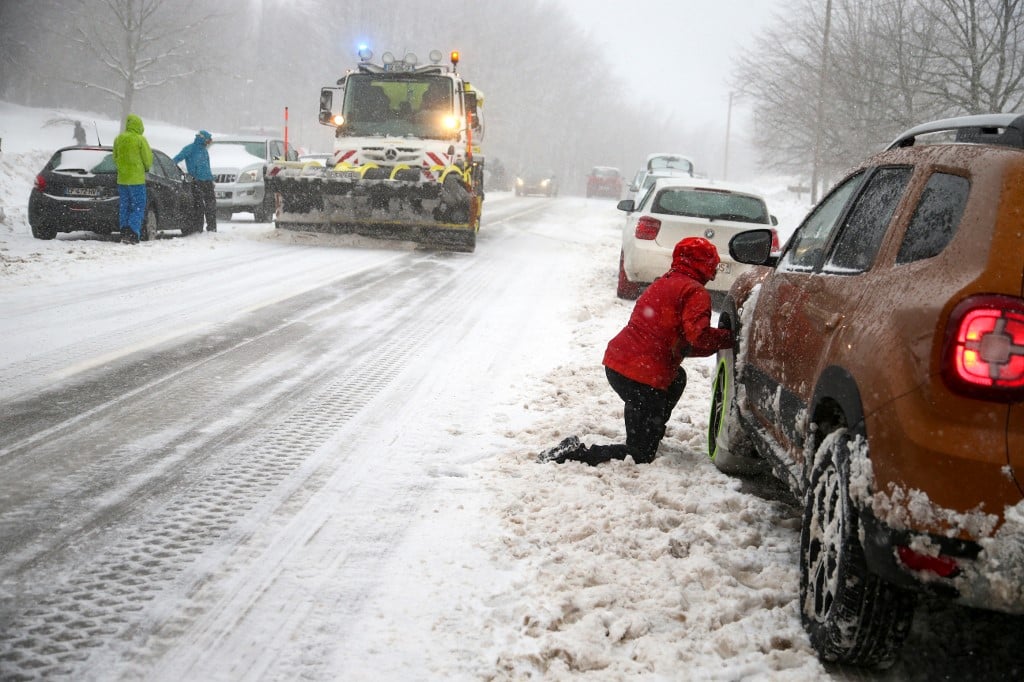What are Italy's rules on switching to winter tires?

Italian road rules require a switch to winter tires by mid-November. We take a look at how the requirements (and penalties) apply for the cold season.
Under the Italian Highway Code, motorists are required to equip their vehicles with winter tires during the cold season.
The window to make the switch opened on October 15th, but the requirement and penalties for not following it will only come into force on Wednesday, November 15th.
By that date, all road vehicles will have to be equipped with winter tires or, alternatively, have snow chains “on board”.
But, in typically Italian fashion, there’s far more to the rule than that.
What areas do the rules apply to?
The Italian Highway Code along with a 2013 ministerial decree state that all road vehicles circulating on Italian soil must have winter tires or snow chains on board from November 15th to April 15th.
However, the Code also gives local authorities (provinces, individual comuni and private highway operators) the power to modify national directives (including time limits) and/or bring in additional requirements according to the features of their own territory.

All road vehicles circulating on Italian soil must have winter tires or snow chains on board from November 15th to April 15th. Photo by Christof STACHE / AFP
The result is a very fragmented legislative landscape, with rules often varying from region to region.
For instance, in Sardinia, only drivers travelling on Strada Statale 131 ('Statale Carlo Felice'), which connects Cagliari to Porto Torres, are required to have winter tires on or keep snow chains on board.
READ ALSO: How visitors to Italy can avoid driving penalties
Additionally, due to the region's particularly favourable climate all year round, the requirement starts on December 1st, i.e. 15 days after other Italian regions, and ends on March 15th, that is one month before elsewhere in the country.
To keep track of all the rules applying to your region or province of residence, refer to the following website from Pneumatici Sotto Controllo.
You can also consult the following interactive map provided by Italian motorway company Autostrade per l’Italia.
What types of tires do I need?
Most winter tires are marked with ‘M+S’ (or sometimes ‘M/S’), meaning ‘mud plus snow’.
Some winter tires might carry the ‘3PMFS’ mark or a symbol consisting of a snowflake encircled by a three-peak mountain range. These tires are largely recognised as the best tires for winter conditions.
Both of the above categories are accepted under Italian law.
In terms of costs, the price of a single winter tire goes from 50 to 200 euros, whereas fitting costs 50 euros on average.

The price of a single winter tire goes from 50 to 200 euros, whereas fitting costs an average of 50 euros. Photo by Christof STACHE / AFP
It’s worth noting that, by law, motorists are allowed to install just two winter tires provided that such tires belong to the same car axle.
But the Italian Transport Ministry advises drivers to install winter tires on all four wheels to avoid potential grip and braking issues.
Snow chains
Motorists can keep snow chains (catene da neve) on board as an alternative to the installation of winter tires.
However, your chosen set of snow chains must be compatible with your vehicle’s tires.
Here’s a useful guide on what types of snow chains you’ll need based on the size of your car’s wheels.

Snow chains can be used as an alternative to winter tires but they have to be compatible with your vehicle’s wheels. Photo by Pascal POCHARD-CASABIANCA / AFP
The asking price for a mid-range set of snow chains is generally somewhere between 70 and 90 euros.
Fines
The Highway Code sets out hefty fines for those who don’t follow the rules.
READ ALSO: EXPLAINED: How to pay Italian traffic fines from abroad
In city centres and residential areas penalties can go from 41 to 169 euros, while fines can be as high as 318 euros on highways and 338 euros on extra-urban roads (strade extraurbane).
As specified by Article 192 of the Code, law enforcement officers can also choose to issue a temporary ‘vehicle detention’ (fermo del veicolo). In this case, motorists will only be able to resume their journey once their vehicle is equipped with winter tires or snow chains.
Motorcycles
The above winter season rules do not apply to motorcycles.
However, the 2013 ministerial decree states that motorcycles are not allowed on the roads in the event of snow or icy conditions.
Comments
See Also
Under the Italian Highway Code, motorists are required to equip their vehicles with winter tires during the cold season.
The window to make the switch opened on October 15th, but the requirement and penalties for not following it will only come into force on Wednesday, November 15th.
By that date, all road vehicles will have to be equipped with winter tires or, alternatively, have snow chains “on board”.
But, in typically Italian fashion, there’s far more to the rule than that.
What areas do the rules apply to?
The Italian Highway Code along with a 2013 ministerial decree state that all road vehicles circulating on Italian soil must have winter tires or snow chains on board from November 15th to April 15th.
However, the Code also gives local authorities (provinces, individual comuni and private highway operators) the power to modify national directives (including time limits) and/or bring in additional requirements according to the features of their own territory.

The result is a very fragmented legislative landscape, with rules often varying from region to region.
For instance, in Sardinia, only drivers travelling on Strada Statale 131 ('Statale Carlo Felice'), which connects Cagliari to Porto Torres, are required to have winter tires on or keep snow chains on board.
READ ALSO: How visitors to Italy can avoid driving penalties
Additionally, due to the region's particularly favourable climate all year round, the requirement starts on December 1st, i.e. 15 days after other Italian regions, and ends on March 15th, that is one month before elsewhere in the country.
To keep track of all the rules applying to your region or province of residence, refer to the following website from Pneumatici Sotto Controllo.
You can also consult the following interactive map provided by Italian motorway company Autostrade per l’Italia.
What types of tires do I need?
Most winter tires are marked with ‘M+S’ (or sometimes ‘M/S’), meaning ‘mud plus snow’.
Some winter tires might carry the ‘3PMFS’ mark or a symbol consisting of a snowflake encircled by a three-peak mountain range. These tires are largely recognised as the best tires for winter conditions.
Both of the above categories are accepted under Italian law.
In terms of costs, the price of a single winter tire goes from 50 to 200 euros, whereas fitting costs 50 euros on average.

It’s worth noting that, by law, motorists are allowed to install just two winter tires provided that such tires belong to the same car axle.
But the Italian Transport Ministry advises drivers to install winter tires on all four wheels to avoid potential grip and braking issues.
Snow chains
Motorists can keep snow chains (catene da neve) on board as an alternative to the installation of winter tires.
However, your chosen set of snow chains must be compatible with your vehicle’s tires.
Here’s a useful guide on what types of snow chains you’ll need based on the size of your car’s wheels.

The asking price for a mid-range set of snow chains is generally somewhere between 70 and 90 euros.
Fines
The Highway Code sets out hefty fines for those who don’t follow the rules.
READ ALSO: EXPLAINED: How to pay Italian traffic fines from abroad
In city centres and residential areas penalties can go from 41 to 169 euros, while fines can be as high as 318 euros on highways and 338 euros on extra-urban roads (strade extraurbane).
As specified by Article 192 of the Code, law enforcement officers can also choose to issue a temporary ‘vehicle detention’ (fermo del veicolo). In this case, motorists will only be able to resume their journey once their vehicle is equipped with winter tires or snow chains.
Motorcycles
The above winter season rules do not apply to motorcycles.
However, the 2013 ministerial decree states that motorcycles are not allowed on the roads in the event of snow or icy conditions.
Join the conversation in our comments section below. Share your own views and experience and if you have a question or suggestion for our journalists then email us at [email protected].
Please keep comments civil, constructive and on topic – and make sure to read our terms of use before getting involved.
Please log in here to leave a comment.